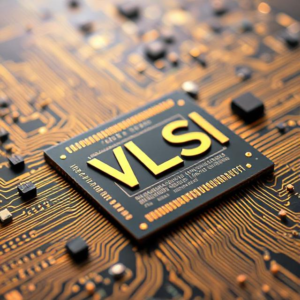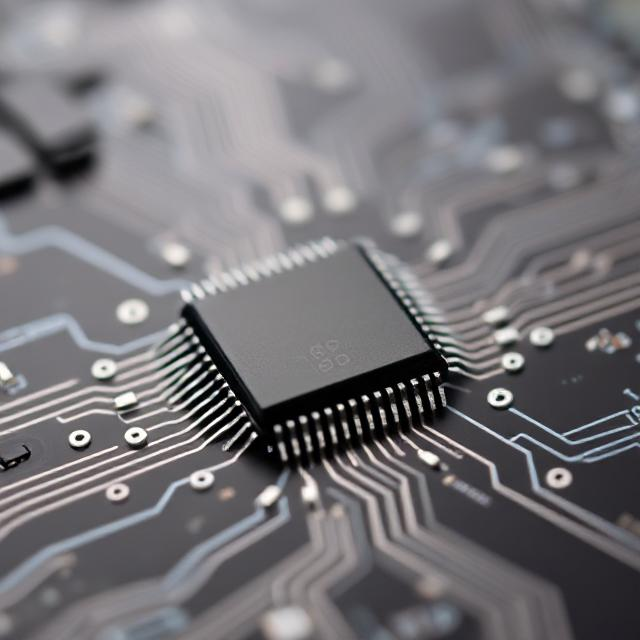VLSI (Very-Large-Scale Integration) is a technology used to create integrated circuits (ICs) by combining thousands or even millions of transistors into a single chip. These transistors, which are tiny electronic switches, are the building blocks of modern electronic devices like smartphones, computers, and televisions.
In simple terms, VLSI is about integration of electronic components (transistors, capacitors, resistors) into a small piece of silicon to make powerful and efficient electronic devices.

VLSI technology has revolutionized the electronics industry by allowing millions of transistors to be integrated into a single chip. This has led to faster, smaller, more powerful, and more affordable electronic devices. From smartphones to computers and medical devices, VLSI technology is at the heart of modern electronics.
Essential Concepts of VLSI Technology :
Integrated Circuits (ICs):
An IC is a set of electrical components that are all connected together on a single piece of semiconductor material (usually silicon). Before VLSI, ICs had only a few components. But with VLSI, you can pack millions of components into a small chip.
Transistors:
Transistors are tiny switches that control the flow of electrical signals. In VLSI technology, millions of transistors are placed onto a single chip to build complex circuits like processors, memory, and more.
Scale of Integration:
SSI (Small-Scale Integration): Few components (10s to 100s of transistors) on a chip.
MSI (Medium-Scale Integration): Hundreds of components (100s to 1000s of transistors).
LSI (Large-Scale Integration): Thousands of components (1000s of transistors).
VLSI (Very-Large-Scale Integration): Millions of components (millions of transistors).
ULSI (Ultra-Large-Scale Integration): Billions of components (billions of transistors).
Miniaturization:
VLSI technology allows engineers to make electronic components smaller and smaller, which means more components can fit into a smaller area. This leads to faster, cheaper, and more powerful devices.
Silicon Wafer:
The material used to make VLSI chips is usually silicon. Silicon wafers are thin, round slices of silicon, and transistors and other components are built layer by layer on top of the wafer.
Fabrication Process:
The process of making VLSI chips is called chip fabrication or microfabrication. This involves:
Photolithography: A process of using light to transfer a pattern onto the silicon wafer.
Etching: Removing certain parts of the wafer to create the desired pattern.
Doping: Adding impurities to certain areas of the silicon to make them conduct electricity.
Deposition: Adding layers of material (like metals) to connect the transistors.
Advantages of VLSI Technology :
Increased Performance:
More transistors on a chip means it can process more data at once, leading to faster performance. For example, modern microprocessors have millions of transistors, which makes them much faster than older ones.
Cost-Effective:
Since many components are made on a single chip, it reduces the cost of manufacturing. Mass production makes it cheaper to make electronic devices.
Miniaturization:
VLSI allows for smaller devices. For example, smartphones, which have complex processors inside, are small and portable because of VLSI technology.
Power Efficiency:
VLSI chips are designed to use less power while performing complex tasks, which is important for mobile devices and other battery-powered electronics.
Reliability:
Fewer physical connections between components reduce the chance of errors and failures, making VLSI chips more reliable than older, larger chips.
Applications of VLSI Technology
Microprocessors:
The central processing unit (CPU) of a computer or smartphone is built using VLSI technology. These chips can handle millions of operations per second.
Memory Chips:
VLSI is used to create memory devices like RAM (Random Access Memory), flash memory, and other storage devices.
Communication Devices:
Mobile phones, Wi-Fi routers, and other communication gadgets rely heavily on VLSI technology to process signals quickly and efficiently.
Embedded Systems:
Many everyday devices (like washing machines, cars, and cameras) use small VLSI chips to control various functions.
Digital Signal Processors (DSP):
DSP chips, used in applications like audio and video processing, are often made with VLSI technology to perform complex mathematical computations.











